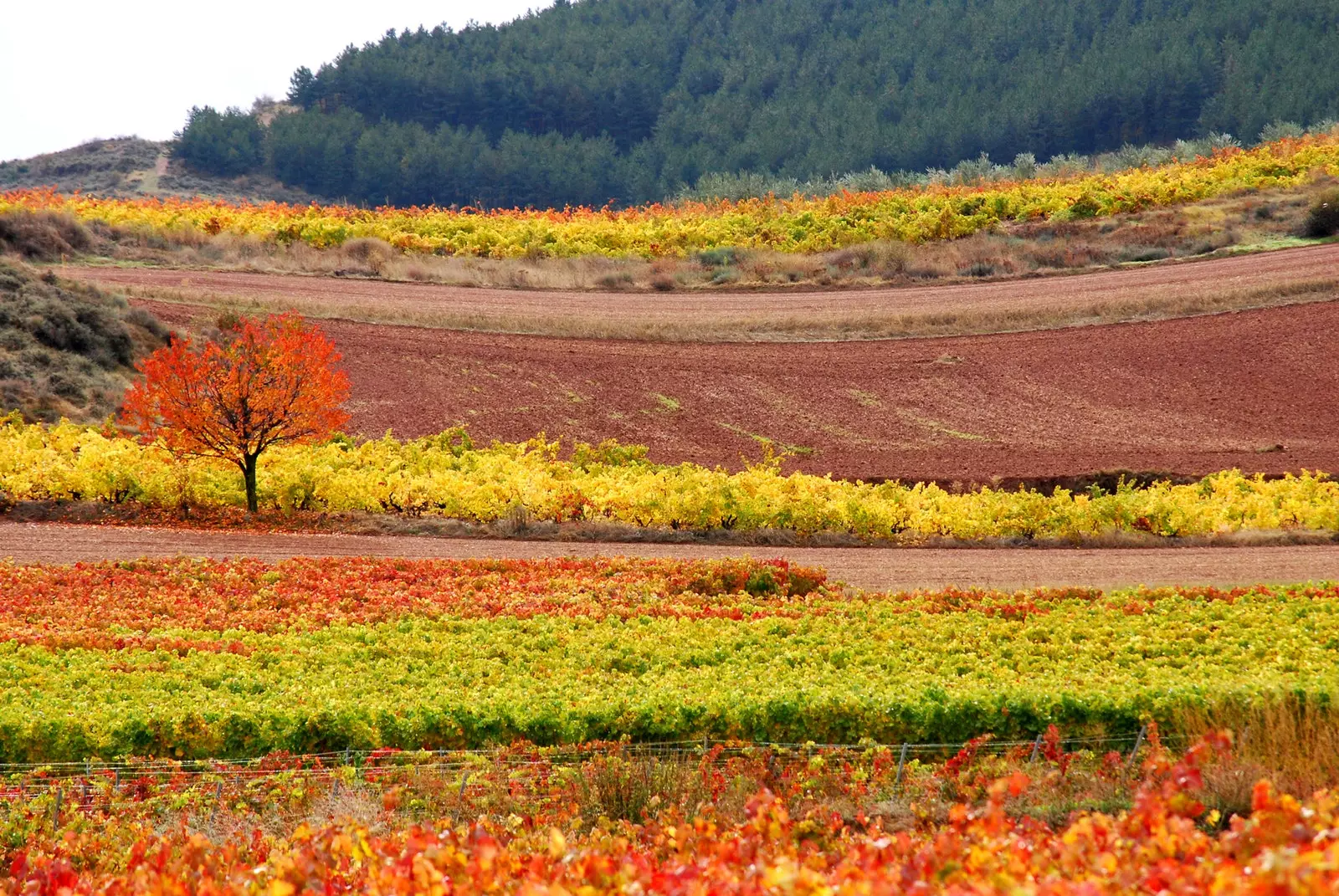
The impressive landscape of vineyards in La Rioja
** La Rioja ** is a land of great wines and spectacular wineries, but this area was during the Middle Ages the center of a world populated by legends. The most famous is still in very good health: ** the Camino de Santiago. **
Our journey starts in Haro, the winemaking capital of a wine region that is today one of the most important in the world. In your neighborhood of the station , you can give yourself these seven acts of 'wine love'.
late 19th century a plague of phylloxera devastated the French vineyards and the people of La Rioja took advantage of the opportunity to export their excellent wines and grapes to the neighboring country, taking advantage of the nascent railway, according to their local winemakers. Since then it has managed to become one of the richest regions of the country.
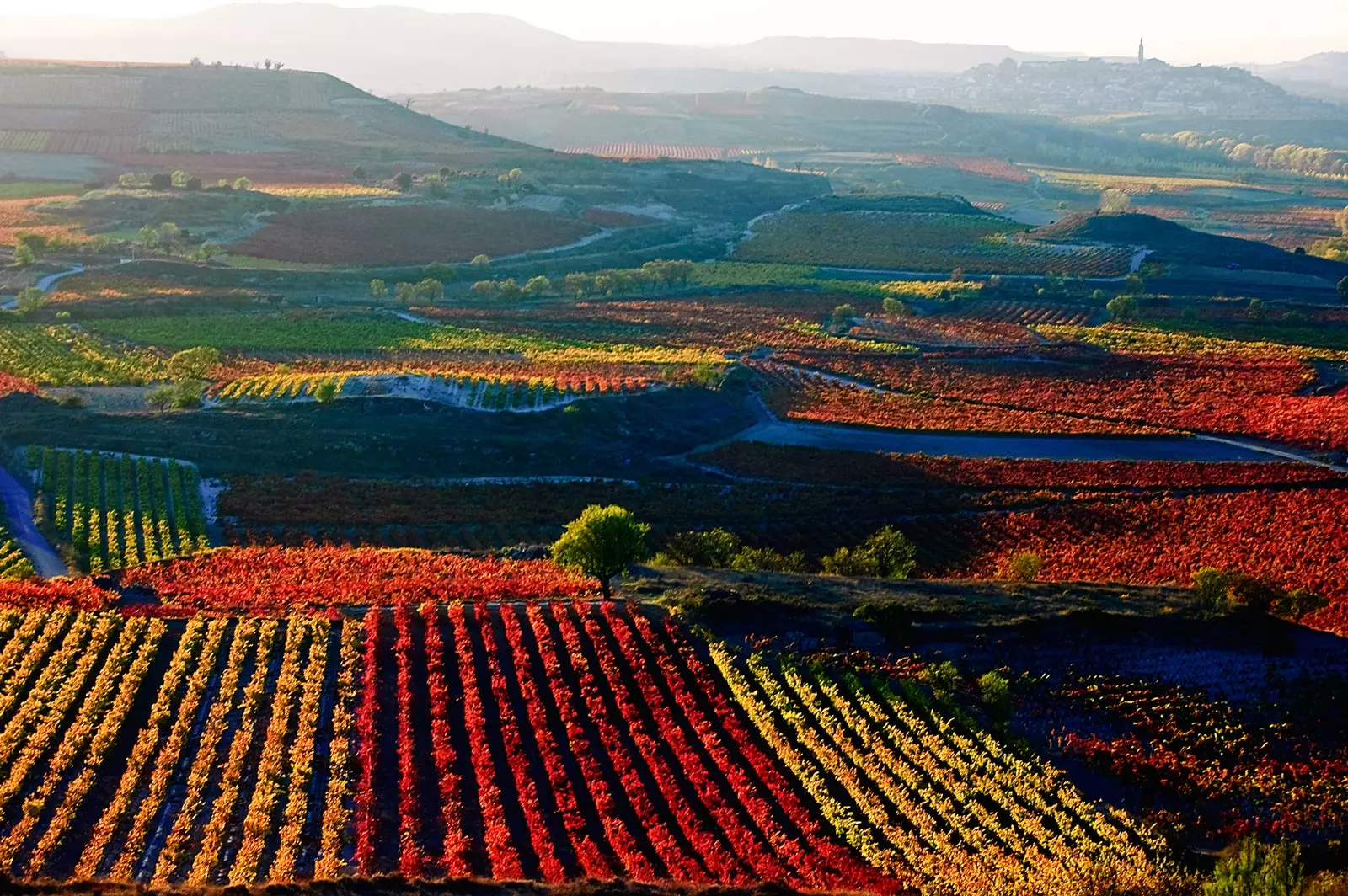
Our trip starts in the colorful vineyards of Haro
The old town de Haro has all the charm of a prosperous provincial city of the last century, but with all the advantages of the 21st century, including quality of life.
your heart is the Peace Square, where the galleries of the houses and the Town Hall look out. Calle de Santo Tomás, which leads to the square, concentrates the most popular restaurants and bars.
The gastronomy of the area is not out of tune with its wines. The orchards on the banks of the Ebro provide j udias, peppers, tomatoes, broad beans, artichokes or peas; the saws, game and meat and the rivers, trout
The traditional dish, made by the grape harvesters to regain strength, potatoes with chorizo (‘a la Riojana’), are added to stuffed peppers, chops roasted on vine shoots, stewed vegetables or beans with quail.
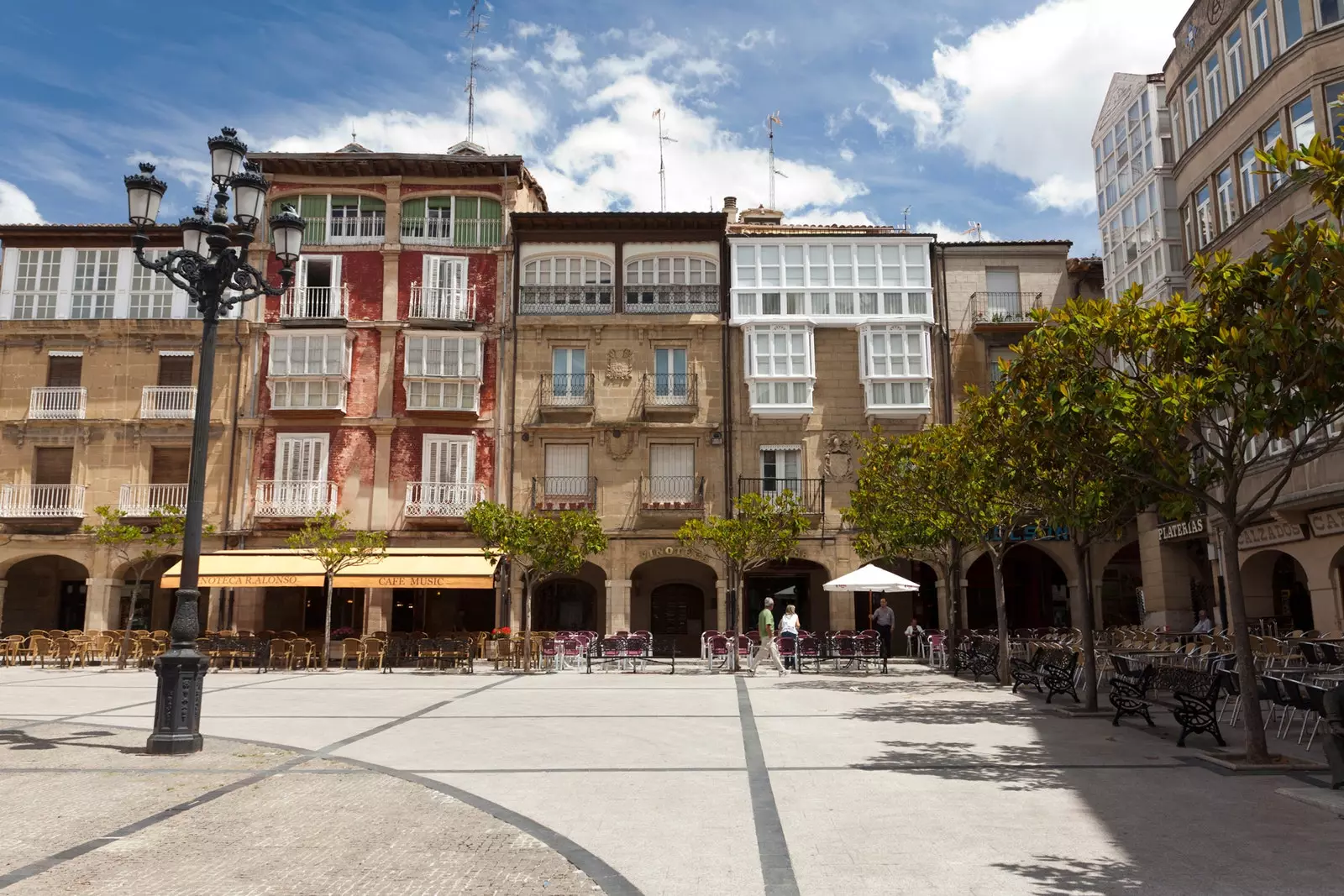
Plaza de la Paz and Santo Tomás street concentrate the most popular restaurants and taverns in Haro
well fed we set off along the N-232 in the direction of Logroño, capital of the autonomous community, and that can serve as a starting point for those who come from the east of the peninsula.
Parallel to the national highway, which comes from Pancorbo, the exit of the AP1, the AP-68 unfolds, but the highway allows us to enjoy driving more and an environment that in these months, according to the writer Bernardo Atxaga, looks like a Tuscan landscape. Although in winter it is rather Basque, gray and hazy.
BRIONES, MEDIEVAL WATCHTOWER
We can also take a detour to visit some of the wineries that are on the road or curious towns such as Briones, 13 km from Haro, a medieval watchtower 80 meters above the Ebro and the enormous extensions of vineyards. Despite its spectacular architecture, this is one of the least known towns in La Rioja.
From here you can see the neighbor perfectly The blind, next door but in the Basque Country, and at the entrance to the Plaza de España, it preserves **the curious Botica de Rabal,** with the decoration, utensils and bottles of the primitive pharmacy, founded in the last third of the 19th century.
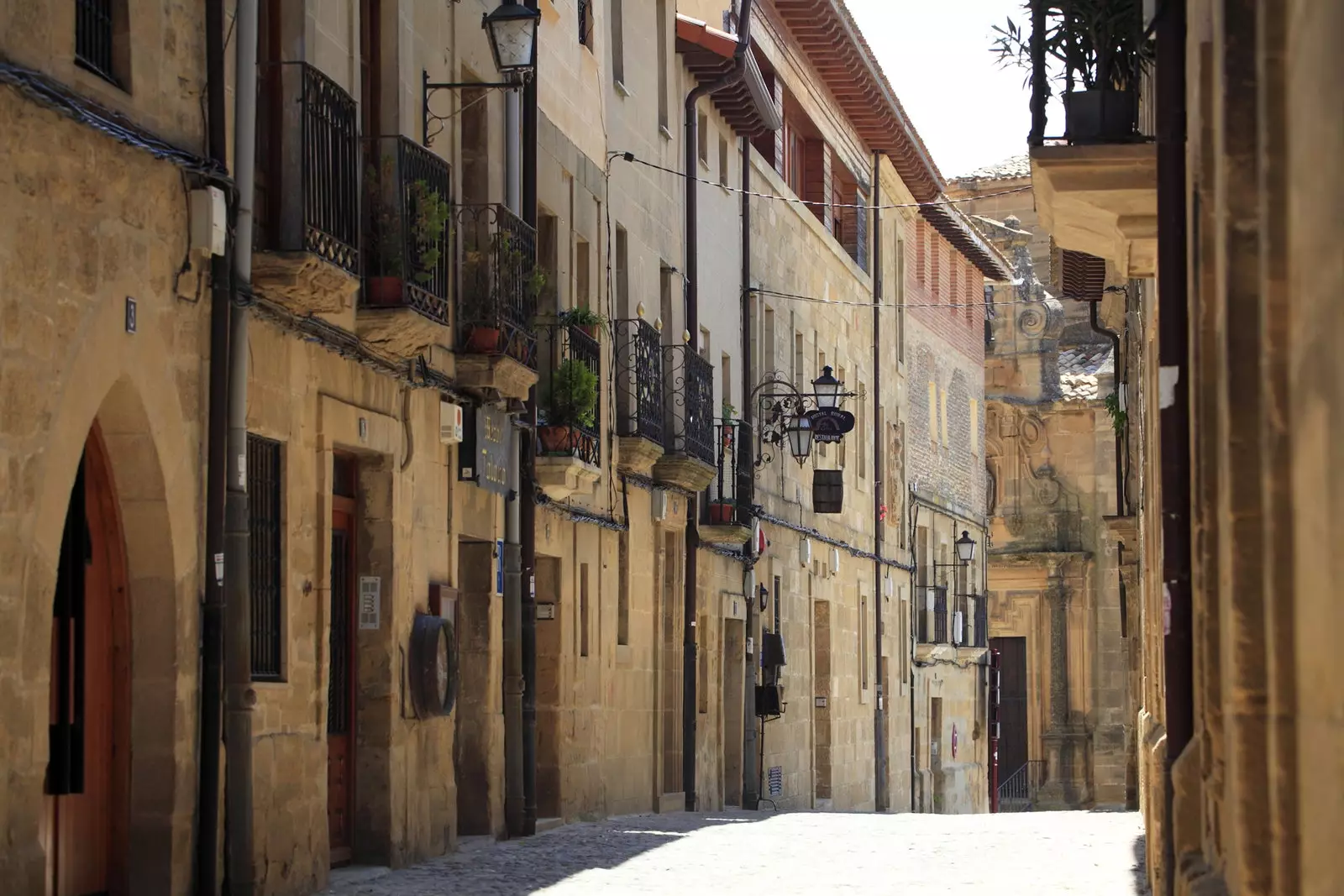
The streets of Briones, a medieval watchtower 80 meters above the Ebro
after passing Ashtray, we take the LR 211 north to visit **El Ciego (or Eltziego) ** just 6 km from the N-232 but already in the province of Álava. To get there you have to cross the Ebro River, the natural border between the two autonomous communities.
The small town was revolutionized a few years ago when the Bodegas Herederos del Marqués de Riscal commissioned the famous American architect Frank Gehry construction of his new headquarters.
The **builder of the Guggenheim Museum in Bilbao** took on the project with such enthusiasm that he supervised it himself and became an expert in Rioja wines.
The result is a spectacular hotel-warehouse covered with corrugated titanium sheets in red, gold and steel.
This singular building changed the physiognomy of the landscape and inaugurated the trend of create luxury hotels and restaurants with groundbreaking architecture in the wineries.
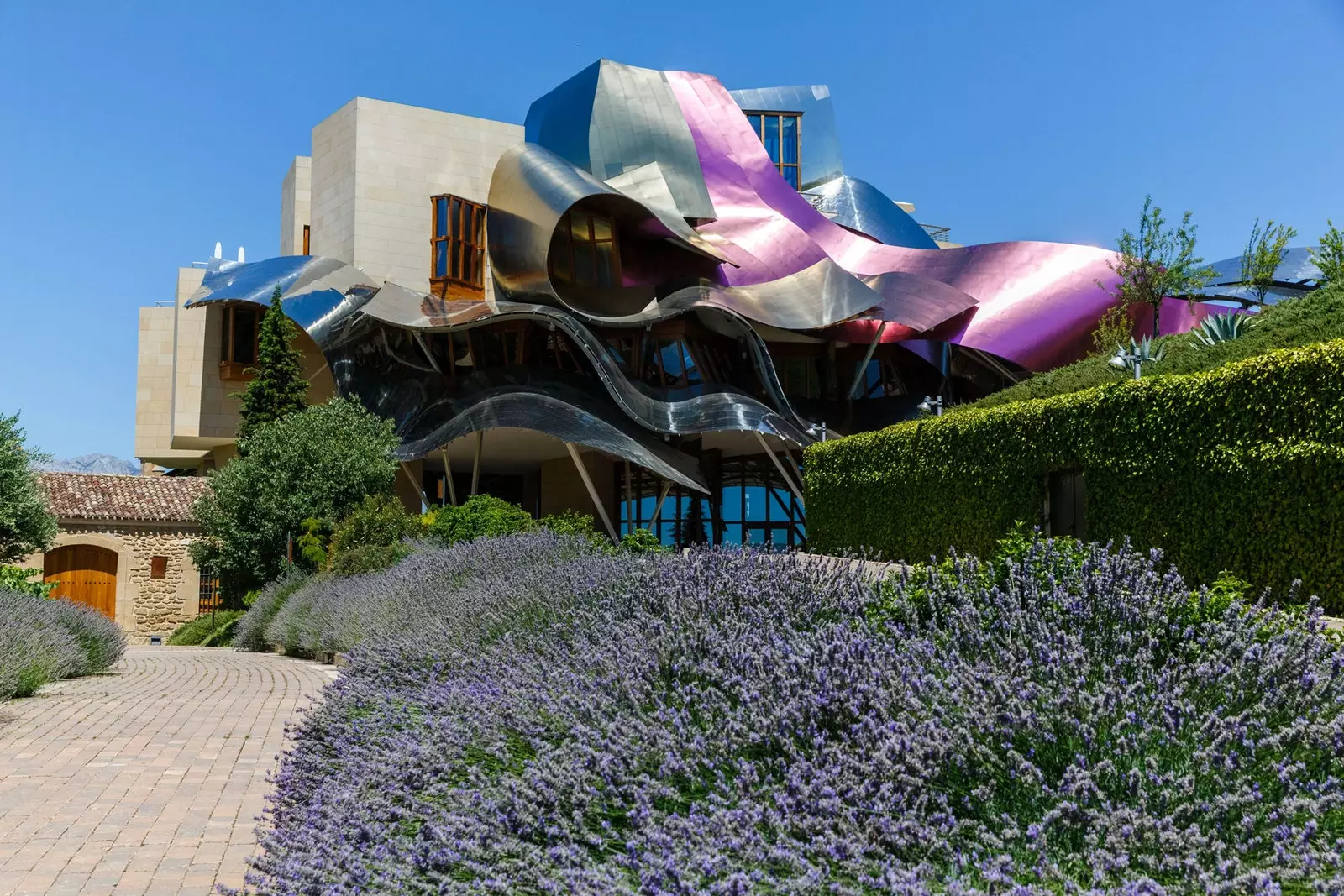
The Bodegas Marqués de Riscal, by the architect Frank Gehry
We return to the road and in Logroño we take the LR 345 south to reach peg, in the northern foothills of the Sierra de Cameros, which is the border with the province of Soria.
About 28 km from the capital of La Rioja, this town is a must-see because it is here that the Santiago's road.
According to legend, in this place there was a bloody battle between Christians and Muslims in the year 850, the Clavijo Battle, in which the apostle James, Came from no one knows where he appeared mounted on a white horse and distributing blows among the enemies of the Christians.
From that legend, the first reference to the presence of the apostle in the Peninsula, the fame of "killers" of Santiago arises and launches, with the support of the French monks of Cluny, the great advertising operation of the Way to visit the tomb of the Saint, who ended up buried (also according to legend) in the confines of the known world, in Galicia.
The current Camino passes through La Rioja a little further north, but many pilgrims who know history deviate to this mythical point.
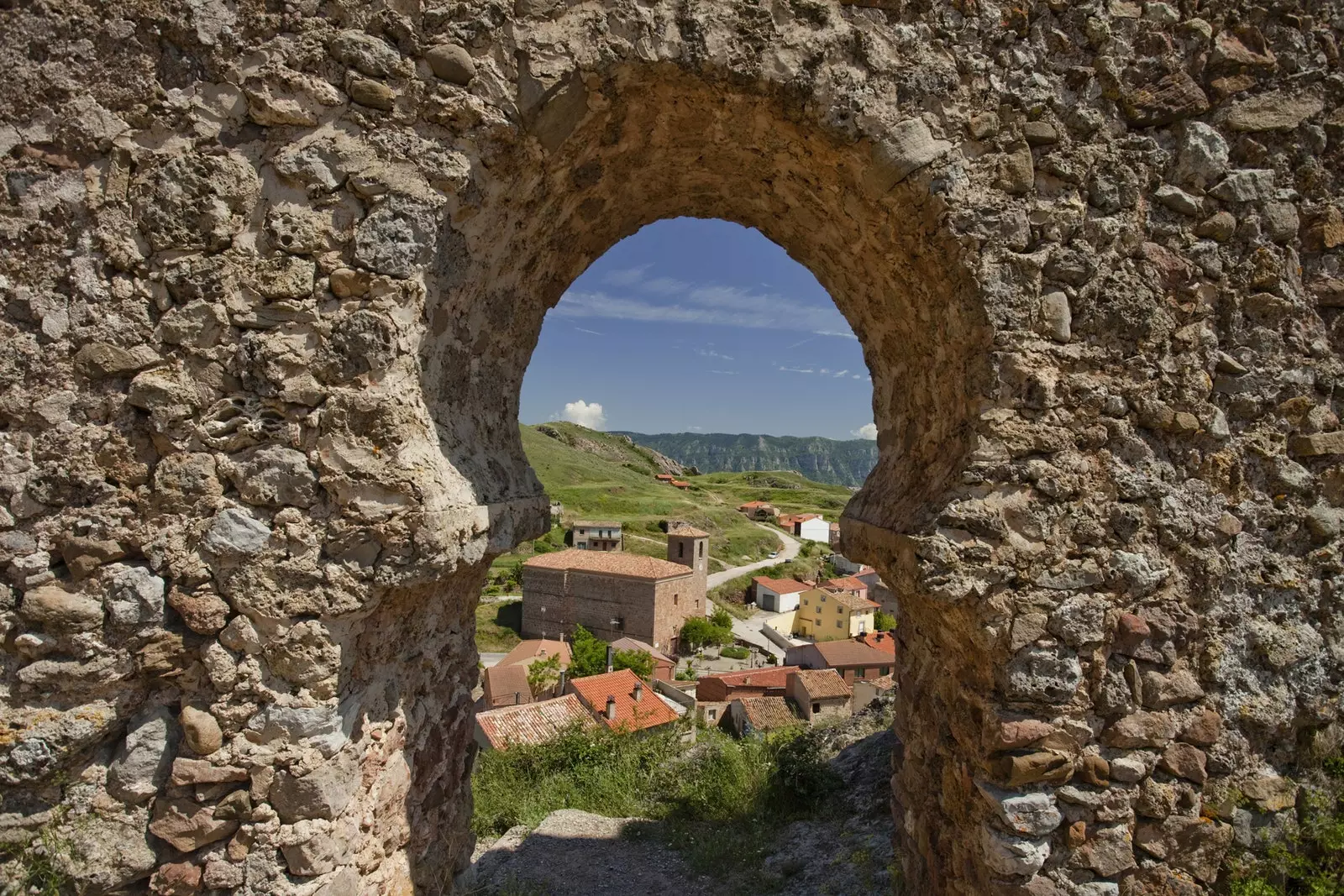
Views from the castle of Clavijo
In Clavijo the remains of an impressive castle-fortress of Arab origin, but with Christian additions from the twelfth and thirteenth centuries. The location and orography leave no doubt that the fortress played a prominent role for centuries in the defense of the Ebro valley.
From Clavijo we return to the north along the LR 255 and 137 highways towards Navarrete. The foothills of the Sierra offer us a tour with soft curves, bordering the Iregua river, which descends boxed creating a wild valley, flanked by rocky walls, authentic natural defenses.
The vegetation of beeches, oaks, pines, heathers and poplars replaces the vineyards. It is a perfect section to do at this time in a convertible or on a motorcycle.
Navarrete places us in the A12, known as the Camino de Santiago highway, that starts in Queen's Bridge. The town deserves a calm walk through its narrow alleys, with arcades supported by wooden beams, where references to the Way and you cross waves of pilgrims.
On the facade of the Santa Maria Parish, in the Plaza Mayor, highlights a yellow arrow, the safest indication for those who go to Compostela.
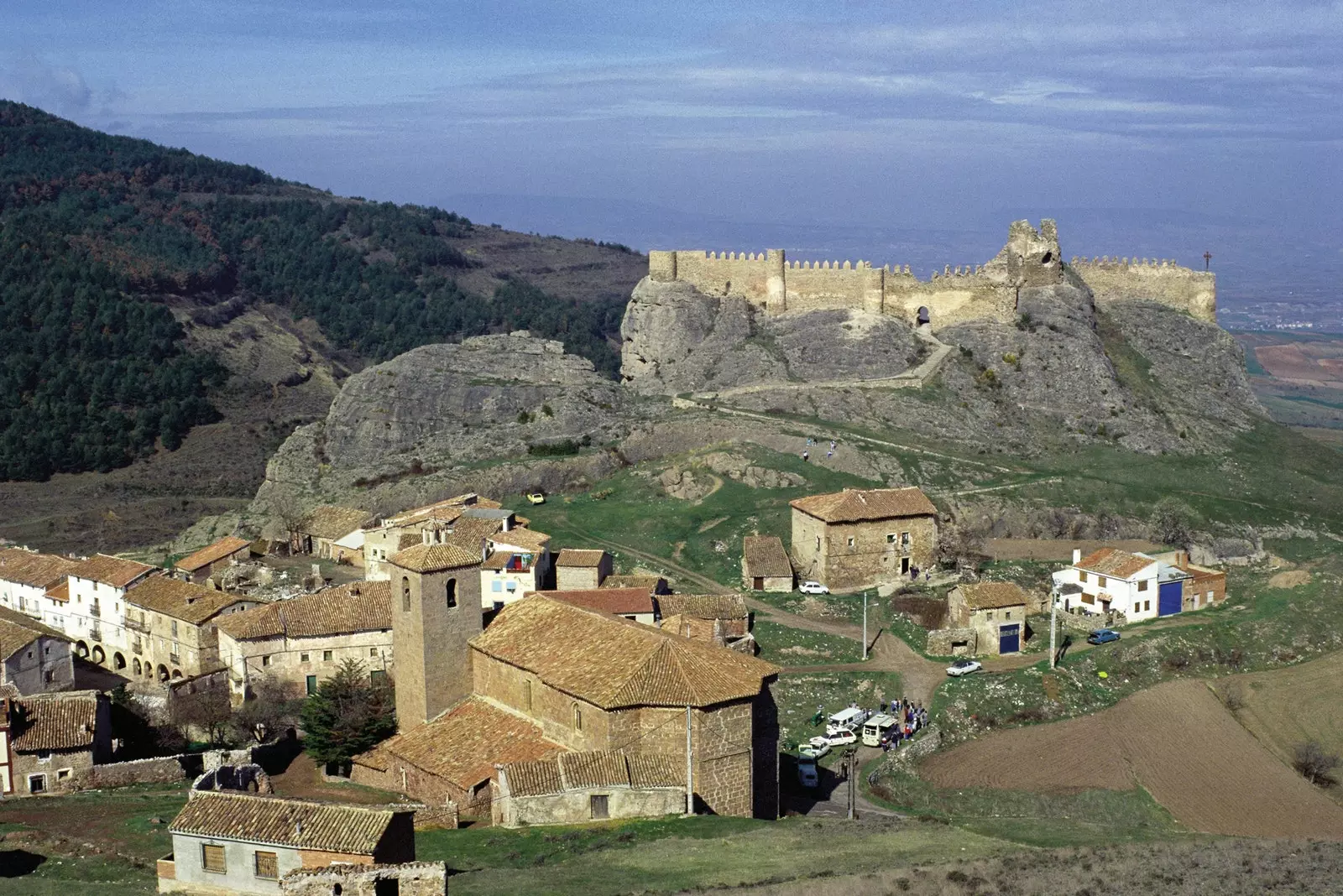
Clavijo with its impressive Arab castle
THE MIRACLES OF SUNDAY
By the A12 in 22 km we arrive at Santo Domingo de la Calzada, one of the most emblematic stages of the Camino de Santiago, which crosses the center of the town from east to west.
In the name of this population history and legend are confused. It seems that it was a hermit, named Domingo, the first to settle in this place, in 1074, and he built a hospital for pilgrims, when the marketing operation of this first tourist route in the world had already made it fashionable.
next was a causeway, a temple and a bridge over the Oja River. And since Domingo was very enterprising, he ended up building another road to communicate, through the Oca mountains, the kingdoms of Castile and Navarre. Pilgrims benefited from this road, but also merchants and kings, who used it for their wars.
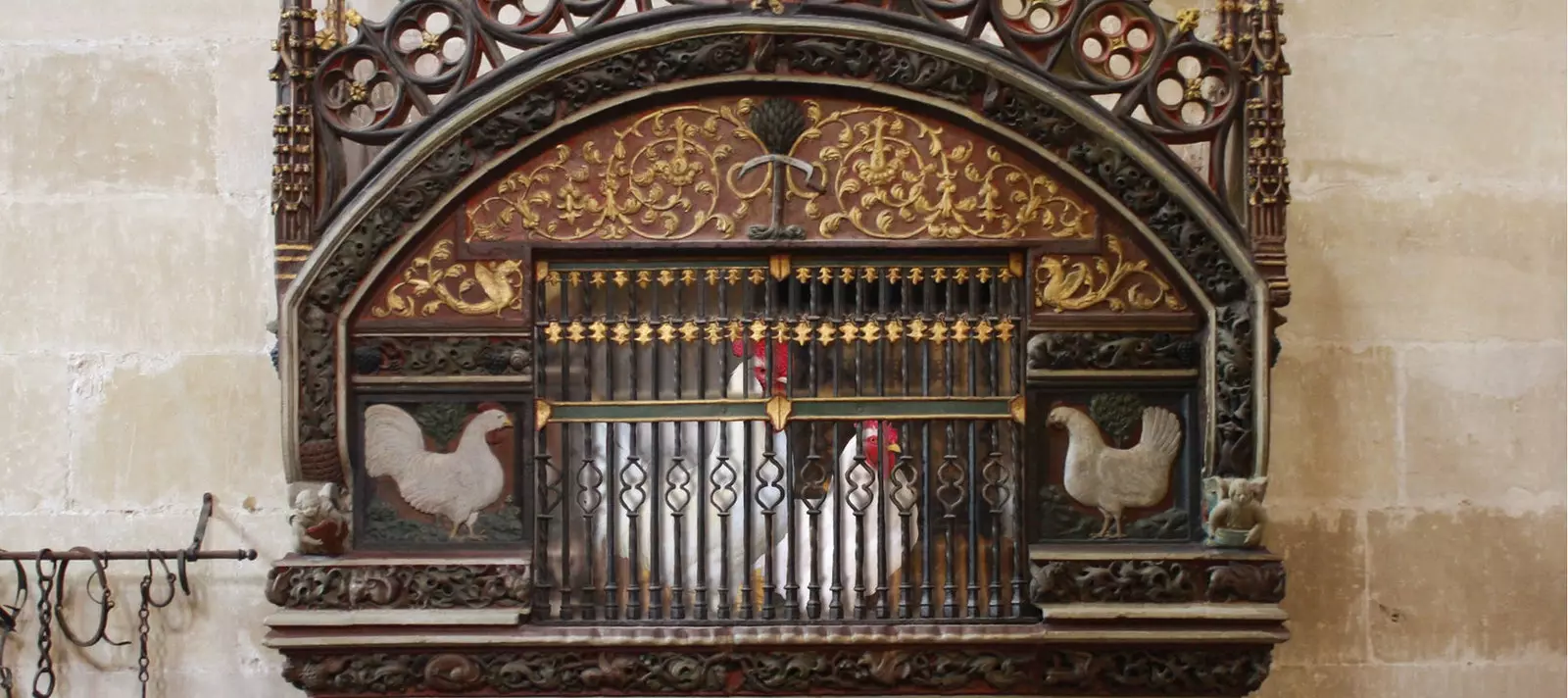
The gothic chicken coop of the cathedral of Santo Domingo de la Calzada
Today Santo Domingo is a town with few entertainments and many monuments that continues to focus on the Camino de Santiago.
The cathedral, with its baroque tower Exenta deserves a visit, if only to see the pair of birds that are raised, in a luxury cage, next to the tomb of Domingo, now Santo Domingo.
The presence of these birds is also the result of a miracle. Two crispy roast chickens came to life and began to sing to confirm the innocence of a pilgrim, accused by a scorned woman, of a robbery that he had not committed. News from the time with a macho tint…, but they are from the 11th century.
TRAVEL BOOKS
The vines of La Rioja have had little literary production, except perhaps Carlos Clavijo's The Children of the Vine, although they a good television series, Gran Reserva, Spanish version of Falcon Crest.
But Santiago's road It's for an encyclopedia. Indispensable are Peregrinatio and Iacobus by Matilde Asensio and, of course, Paulo Coelho's first novel, The Pilgrim of Compostela, in which he recounts the trip he made in 1986.
El Camino: A Spiritual Journey by American Actress Shirley MacLaine He is one of those responsible for the fact that there are now so many North Americans on the Camino de Santiago.
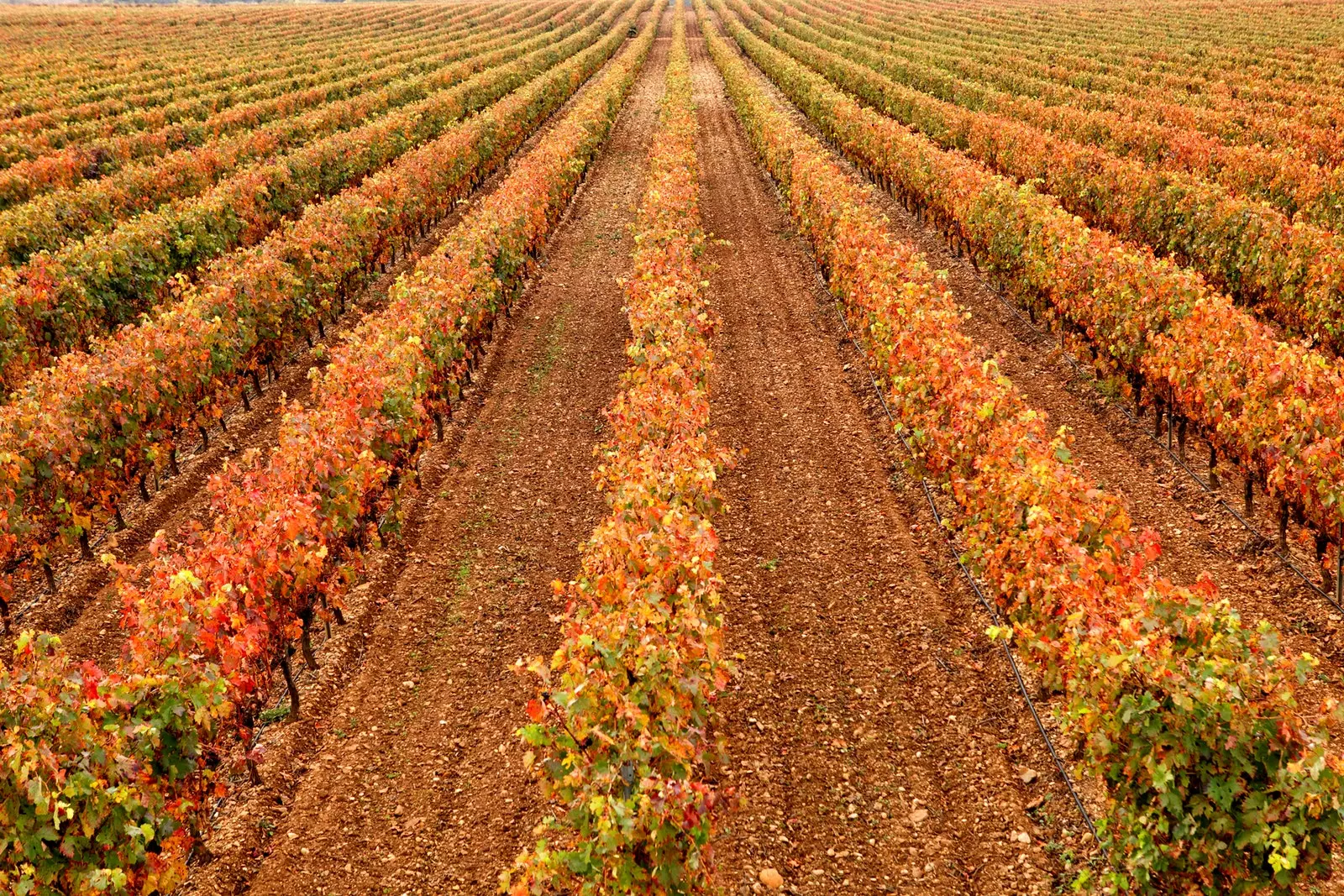
Haro, La Rioja
